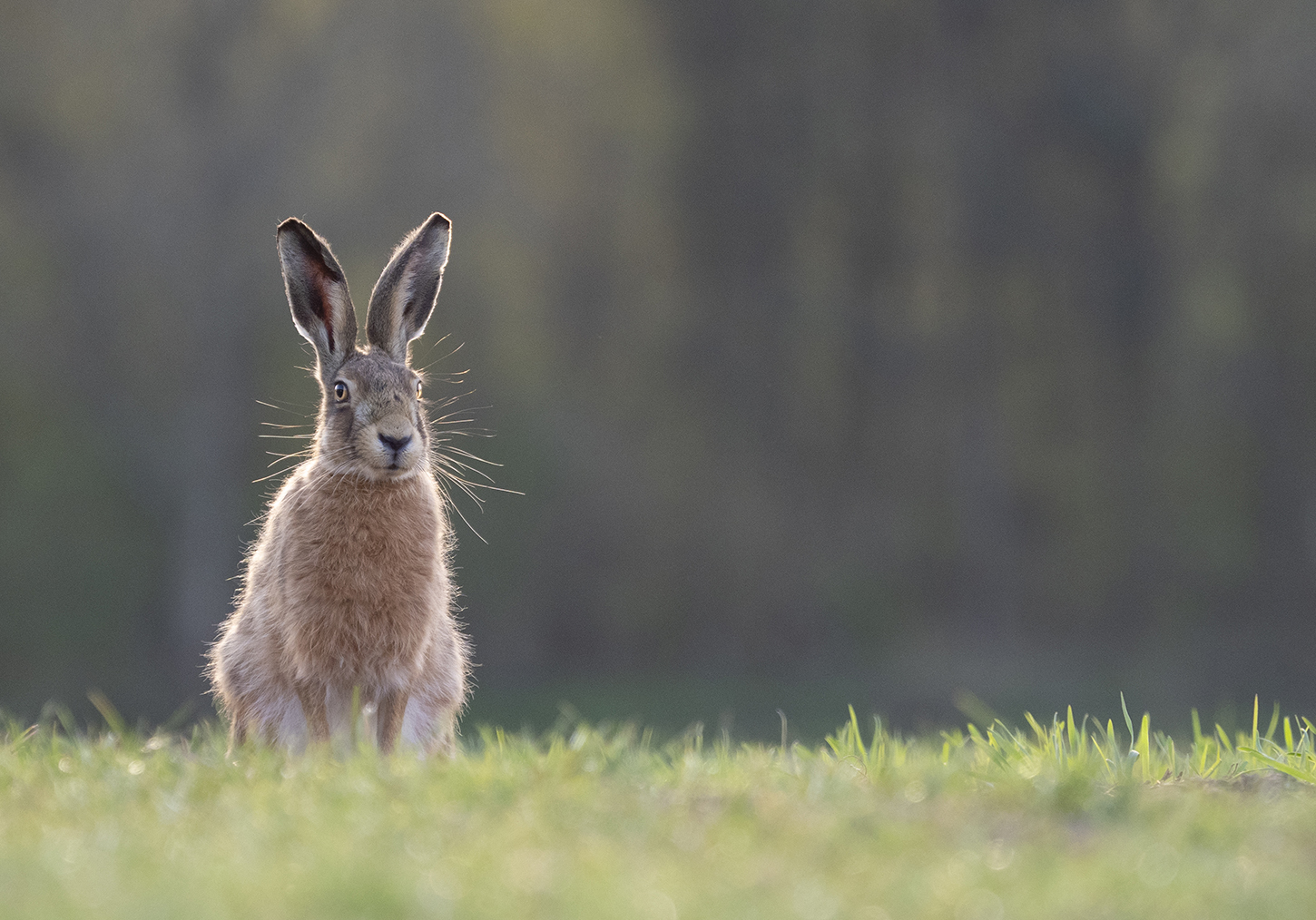
(Not so) mad March hares
As a keen wildlife photographer (when I am not at my desk), I absolutely love this time of year. There is so much promise of what is to come, with trees and plants springing into bud and animals pairing up for the months ahead. From the landscape looking dull and grey, suddenly everything starts to burst with colour.
Without a doubt, one of my favourite species to work with during these spring months is the brown hare. Full of character and wonderfully elusive, they offer plenty of challenges for the aspiring photographer. A lot of time and patience is required to get the shots you desire and, during the many hours I have spent lying in the grass watching these animals (yes, there are more glamorous hobbies), it has got me thinking about the lessons we can learn from them.
Listen carefully
When we think about hares, our minds are almost certainly drawn to their long, black-tipped ears. One of the iconic sights of the countryside here in Britain, these ears are the outward sign of the excellent hearing that hares enjoy. Their ability to detect potential danger through sound is an essential survival skill for hares and serves as a reminder to us all how powerful it can be when we stop and really listen.
Play to your strengths
Hares are vulnerable to several threats, especially as they live exclusively above ground. They find shelter in shallow depressions in the soil (up to 10cm deep) called ‘forms’ and rely on cover from grass and crops, rather than retreating to the safety of an underground home. To survive, these canny little creatures are super adept at playing to their strengths – using their hearing to alert them to danger and then relying on their immense speed (the brown hare is Britain’s fastest land mammal) and agility to enable them to escape. Being aware of our strengths and ‘superpowers’ enables us to leverage more of what makes us successful, raising the bar not only for ourselves but also for the team we are working with. DISC personality profiling is an excellent tool for helping us to identify our strengths.
Time it right
At The Juniper Co. we work with clients across multiple time zones. Managing our time wisely is imperative to be able to provide the best service for our clients – and this sets me up well for having the discipline to work with hares. They are mostly active at night so the best time to see them is at dawn and dusk, when they are foraging. You need to have an eye on the time to enjoy watching hares, turning up midmorning after a leisurely breakfast is unlikely to yield success. It is also much easier to see them during early spring, when the breeding season encourages fighting or ‘boxing’ and the crops and grasses haven’t yet grown so tall that they hide the activity.
Don’t take things for granted
According to the Woodland Trust, it is thought that brown hares in the UK have decreased by up to 80% in the last century, largely due to loss of habitat, hunting and changes in agricultural practices. Like many mammals, hares require a balanced ecosystem where their numbers are steady and they have access to suitable habitat – they favour a mix of arable fields and grasses, with access to hedgerows or woodland edges for shelter. These figures are quite sobering in reminding us that we have a lot of work to do to preserve the world around us. However, with increasing focus on sustainability and growing efforts to improve stocks of natural capital, things are already looking much better for our hares. The People’s Trust for Endangered Species reports an upturn in numbers in the last five years and I have certainly seen a lot more hares in my local area – making the time spent hiding in ditches much more rewarding!